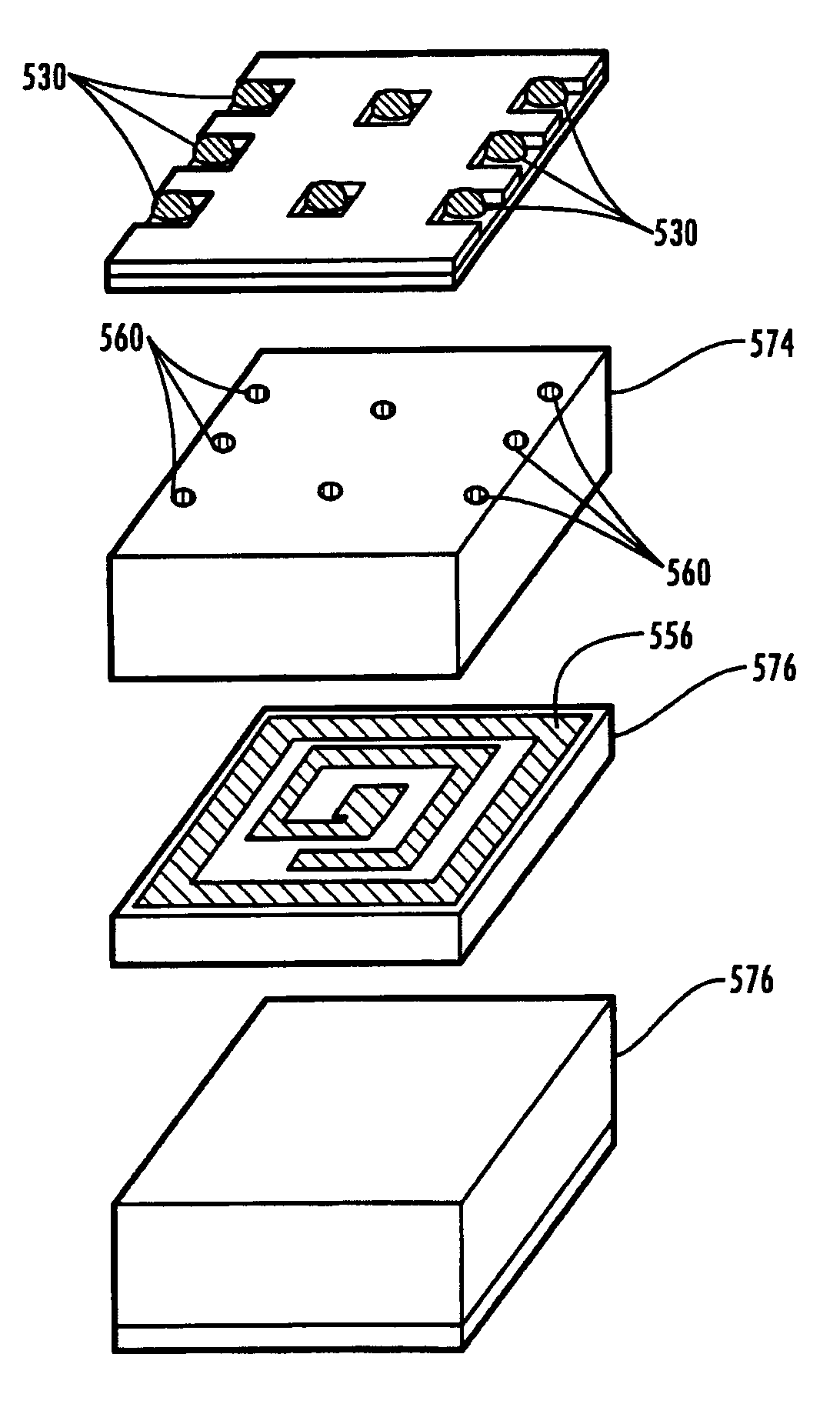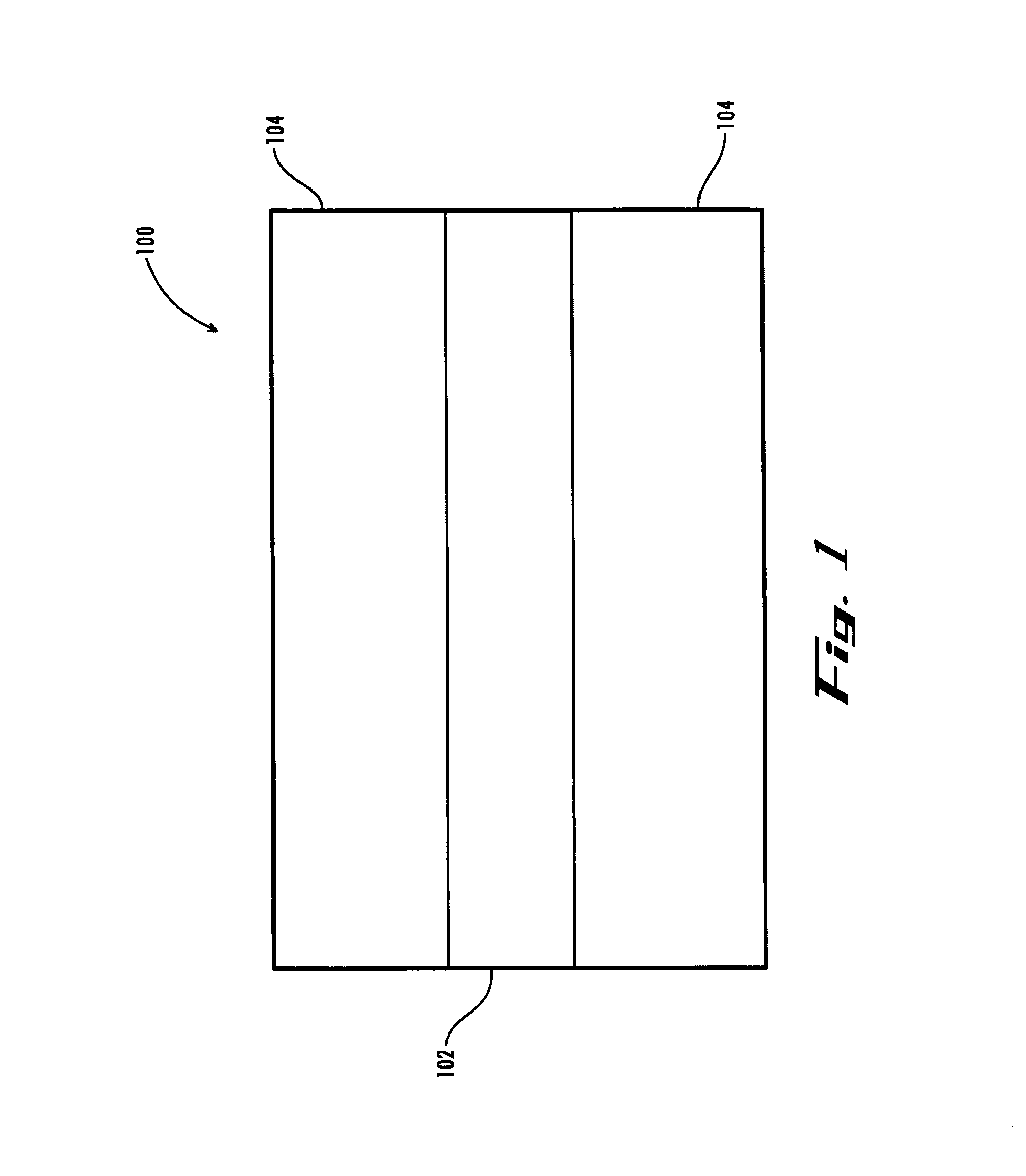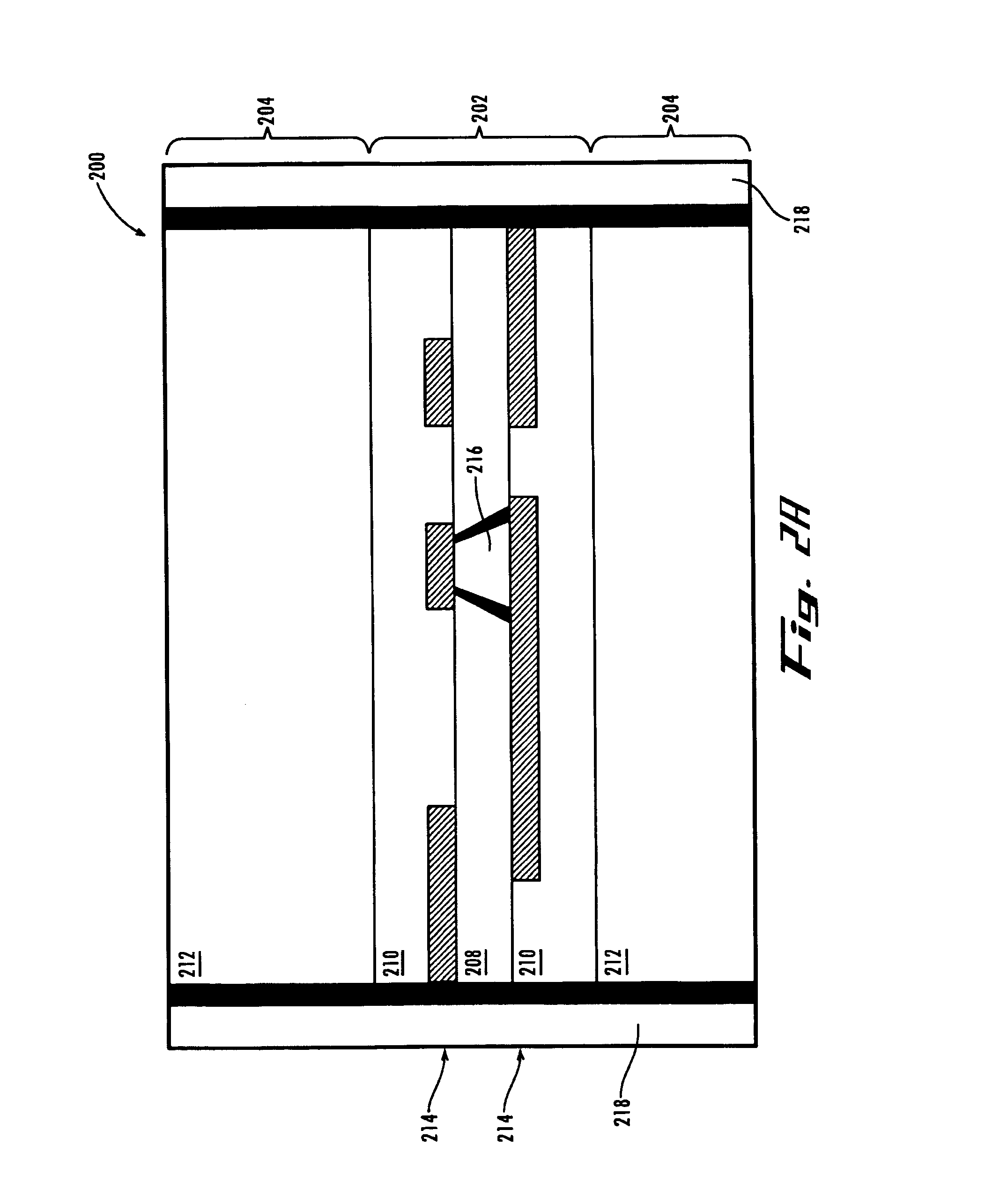Stand-alone organic-based passive devices
a passive device and organic technology, applied in the direction of superconductor devices, waveguide types, waveguides, etc., can solve the problems of reducing the quality factor, adding to the complexity of modeling the device, and none of the above-mentioned inductor designs provides a suitable combination of low cost, high yield, and high current. , to achieve the effect of low cost, low cost and high performan
- Summary
- Abstract
- Description
- Claims
- Application Information
AI Technical Summary
Benefits of technology
Problems solved by technology
Method used
Image
Examples
Embodiment Construction
I. Organic Substrate for Integrated Passive Components
[0040]FIG. 1 is a schematic illustration of an embodiment of an all organic integrated passive device 100 packaged in a stand-alone configuration in accordance with an embodiment of the present invention. The device 100 comprises a device component 102 sandwiched between two shielding and packaging components 104. The device component 102 may comprise a single layer or multiple layers of low cost, high performance organic material metalized on one or both sides to form one or more passive devices, such as inductors, as discussed in more detail below. The shielding and packaging components 104 may comprise external shielding, particularly if the device component 102 does not provide in-built shielding, and / or one or more relatively thick and rigid structural layers, also referred to as core layers. The shielding and packaging layer 104 may comprise a single layer or multiple layers of material, as discussed in more detail below.
[0...
PUM
 Login to View More
Login to View More Abstract
Description
Claims
Application Information
 Login to View More
Login to View More - R&D
- Intellectual Property
- Life Sciences
- Materials
- Tech Scout
- Unparalleled Data Quality
- Higher Quality Content
- 60% Fewer Hallucinations
Browse by: Latest US Patents, China's latest patents, Technical Efficacy Thesaurus, Application Domain, Technology Topic, Popular Technical Reports.
© 2025 PatSnap. All rights reserved.Legal|Privacy policy|Modern Slavery Act Transparency Statement|Sitemap|About US| Contact US: help@patsnap.com



